Marine Biosecurity Toolbox scientist Dr Ulla von Ammon joined the BLAKE Expedition and shared with the expedition team the eDNA tools, including the newly designed Cruising Speed Net, for detecting unwanted organisms in marine environments.
From North to South – scientists set sail for two collaborative expeditions
In 2021, the DETECT team had a big year on the water participating in two research expeditions, across two very distant and ecologically different areas of Aotearoa. These expeditions were made possible through successful collaboration between two nationally significant research programmes, Aotearoa Impacts and Mitigation of Microplastics (AIM2) and Marine Biosecurity Toolbox, and the Blue Cradle Foundation.
The first expedition onboard SV Manawanui launched in June the from Waitematā Harbour in Tāmaki Makaurau Auckland. We continued north along the coast collecting microplastics and biosecurity data in the Hauraki Gulf and Whangarei areas, whilst exploring the wider marine environment of coastal Greater Auckland and Northland. Specifically, the DETECT team tested the performance of an optimized sampling device aimed at collecting environmental DNA (eDNA) from the water column at a cruising speed of up to 7 knots while circumventing time consuming filtering steps.
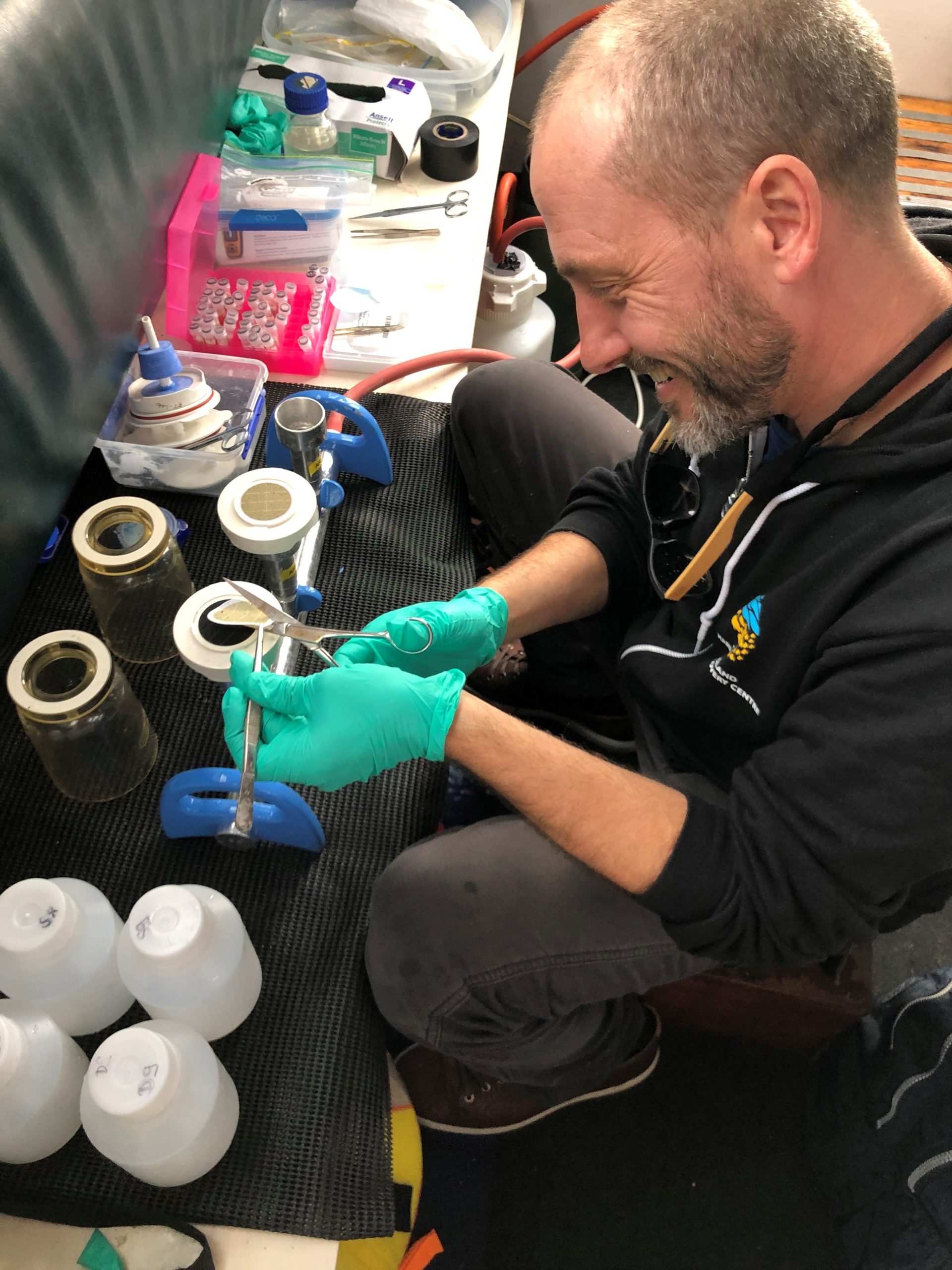
Prof. Xavier Pochon processing samples collected using the conventional protocol (involving filtration step) for comparison purposes
The expedition team of 15 scientists, entrepreneurs, artists and students we were able to jump back on land to bring our work to the local communities, stakeholders and tamariki. Special thanks to Northland Regional Council for co-organizing a great workshop in Whangarei! Along the way a big emphasis was made on education and sharing our at sea experience with wider communities via news articles, videos and blog posts.
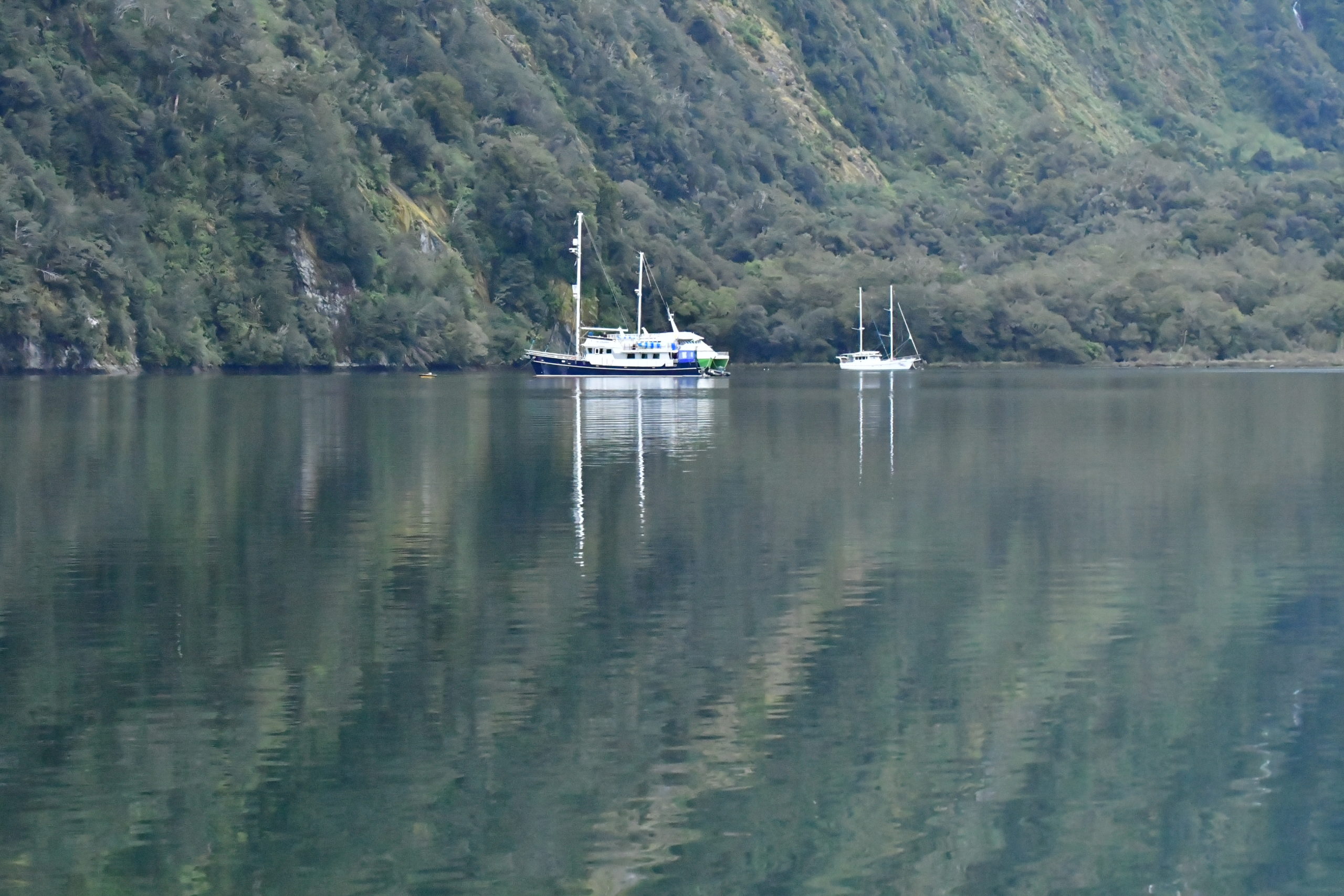 MV Strannik awaiting the science crew in Milford Sound
MV Strannik awaiting the science crew in Milford Sound
The second expedition aboard the MV Strannik set off in October from Milford Sound to travel to George and Bligh Sounds for 6 days of sampling. As in our first expedition, we used manta trawls and a modified cruising speed net to collect valuable samples for microplastics and biosecurity research teams. One of the most notorious international marine pests established and spreading in the region is the invasive seaweed Undaria pinnatifida. A marine pest such as Undaria has the potential to do significant damage to the ecology and economy of the precious and unique area of Fiordland, therefore a huge effort is being made by governmental organisations and local communities to mitigate the spread of this and other unwanted organisms.
As part of the DETECT worksteam we develop and test simplified molecular detection approaches for high-profile non-indigenous species (including Undaria), which can be adapted for the point-of-need application by end-users such as regional councils, kaitiaki, schools and public volunteers who do not have lab access or molecular expertise, but are keen to help protect the marine environment. On-board the MV Strannik we collected eDNA samples to better understand the distribution of non-indigenous species across the Fiordland region and further validate efficiency of different approaches for the collection and preservation of environmental DNA and RNA.
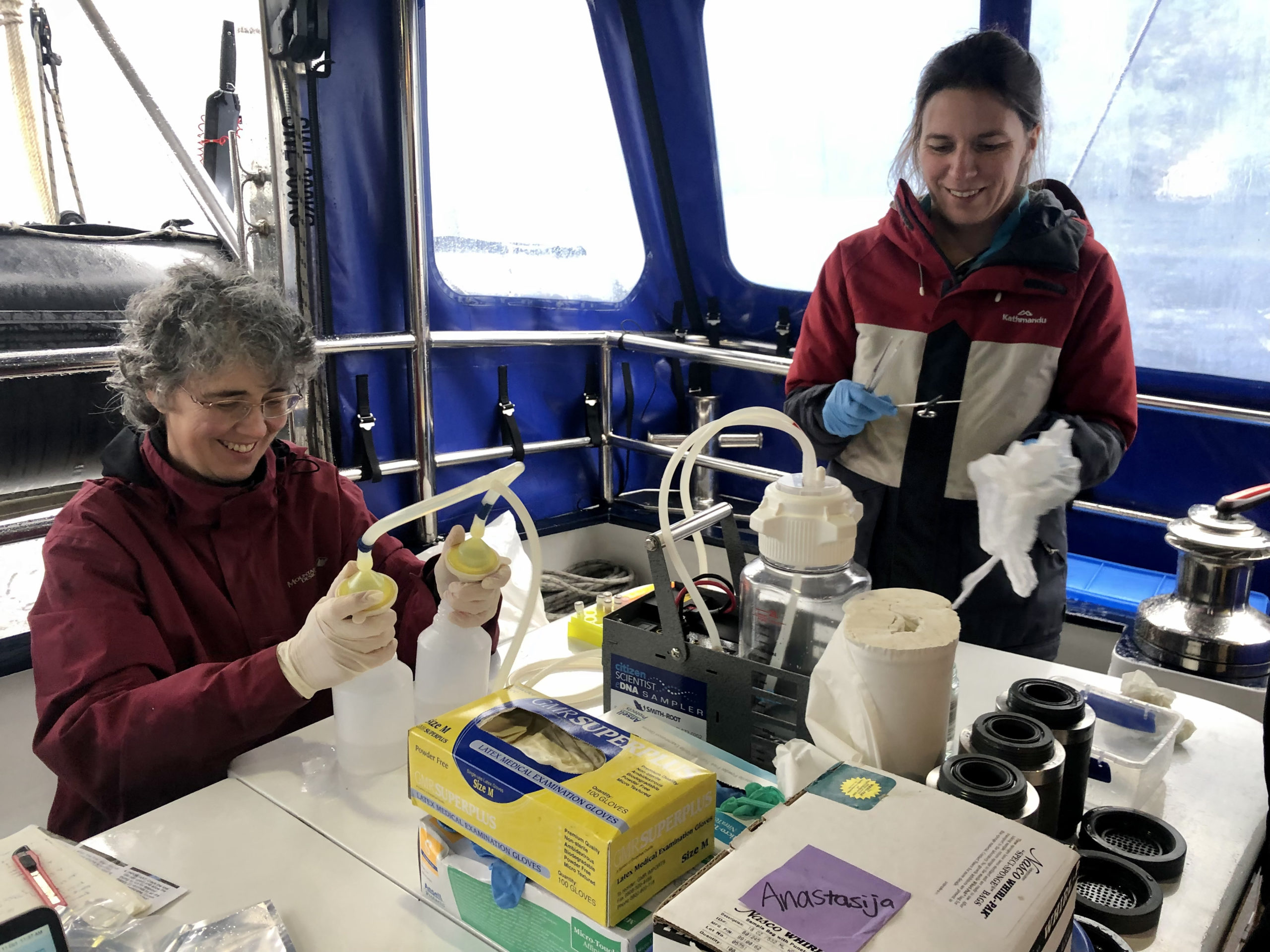
Prof. Jo Stanton and Dr. Olga Belonovich processing collected samples using concurrent workflows
This time, however, we used this cruise opportunity to test some point-of-need techniques in the real-life “ex-lab” setting. We arranged a fully functional molecular laboratory onboard, which allowed us to instantly extract eDNA from freshly collected samples, run targeted qPCR assay for Undaria detection, and even carry out high-throughput sequencing using nanopore technology! This unique experience enabled an in-depth assessment of the performance and practicality of using these tools in field settings and allowed to further adjust and optimise the protocols.
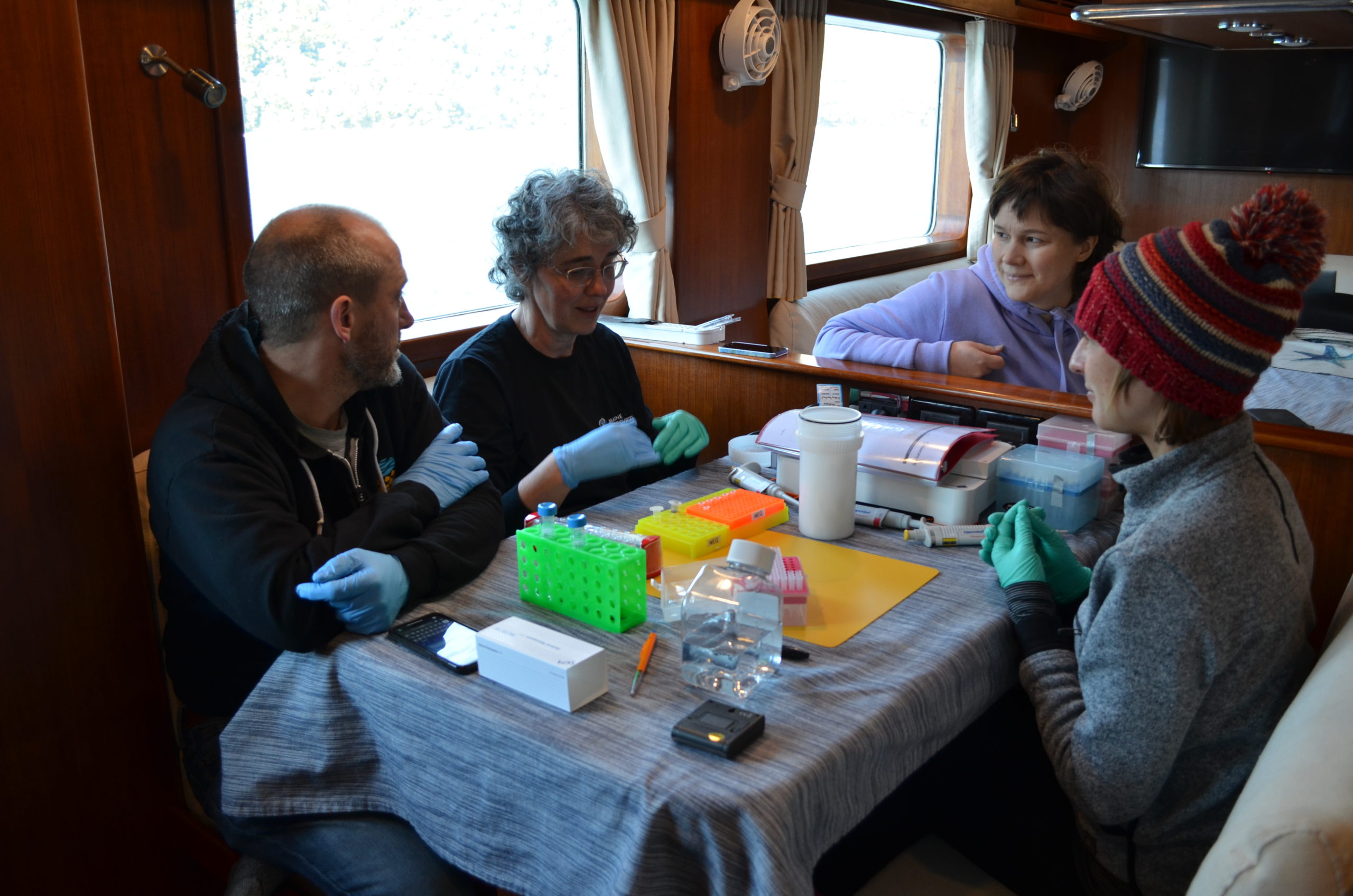
DETECT team Profs. Xavier Pochon and Jo Stanton, Drs. Anastasija Zaiko and Ulla von Ammon are setting up an on-board lab for molecular analyses of eDNA samples.
The collected samples are being further analysed in the lab for a more detailed comparison of toolkits and protocols, and for acquiring valuable data on the distribution of high-profile non-indigenous species across these two regions.
Check also the videos from the expeditions created by the Blue Cradle Foundation:

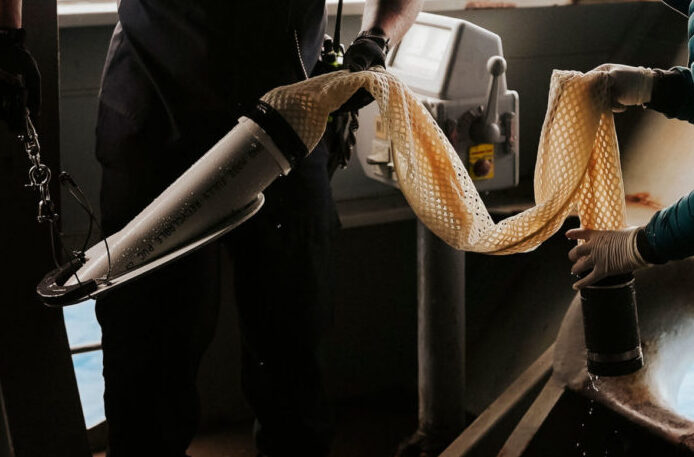
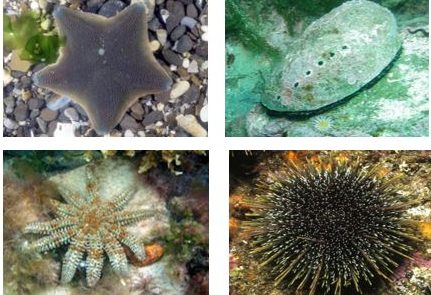
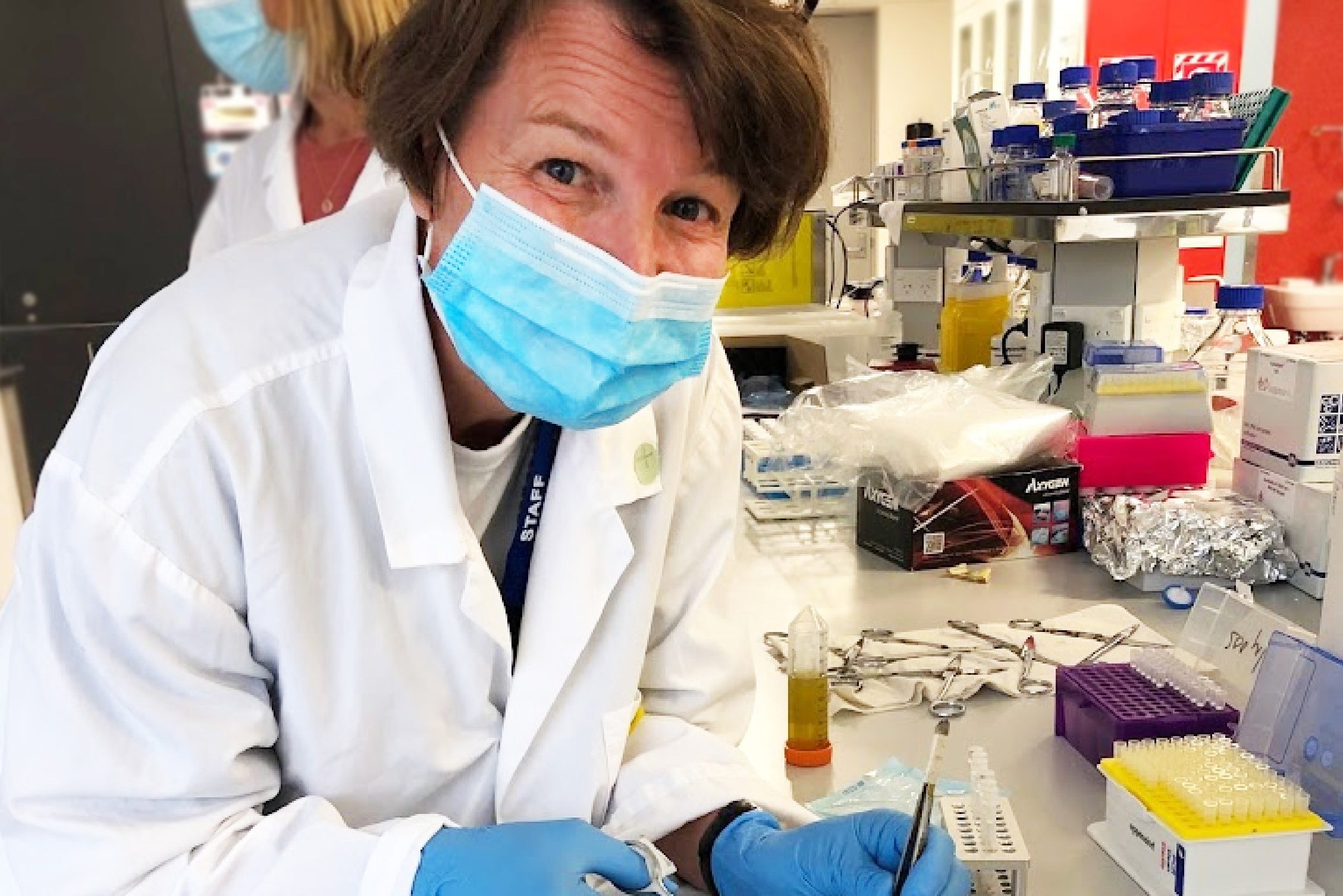
Comments (0)